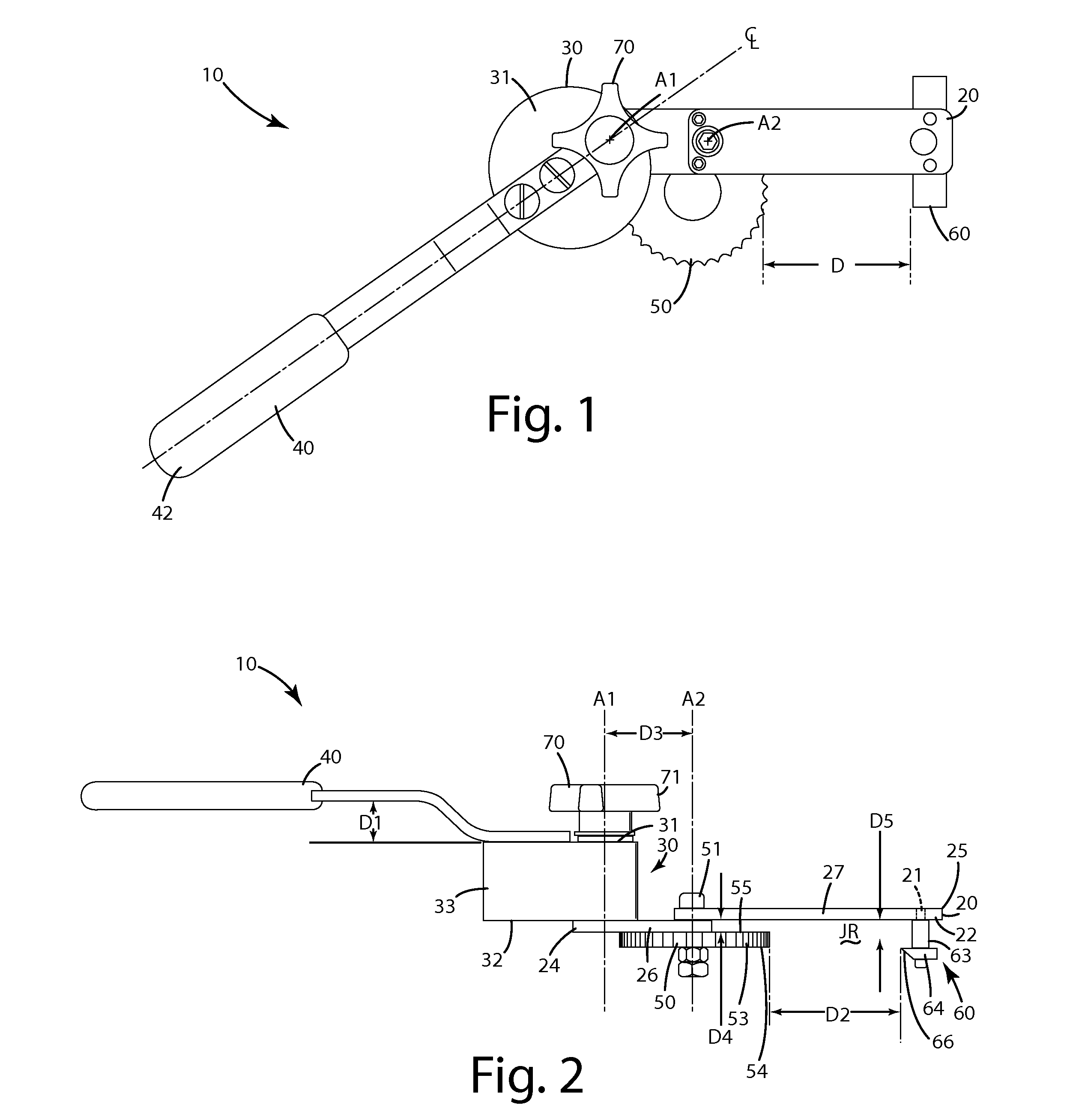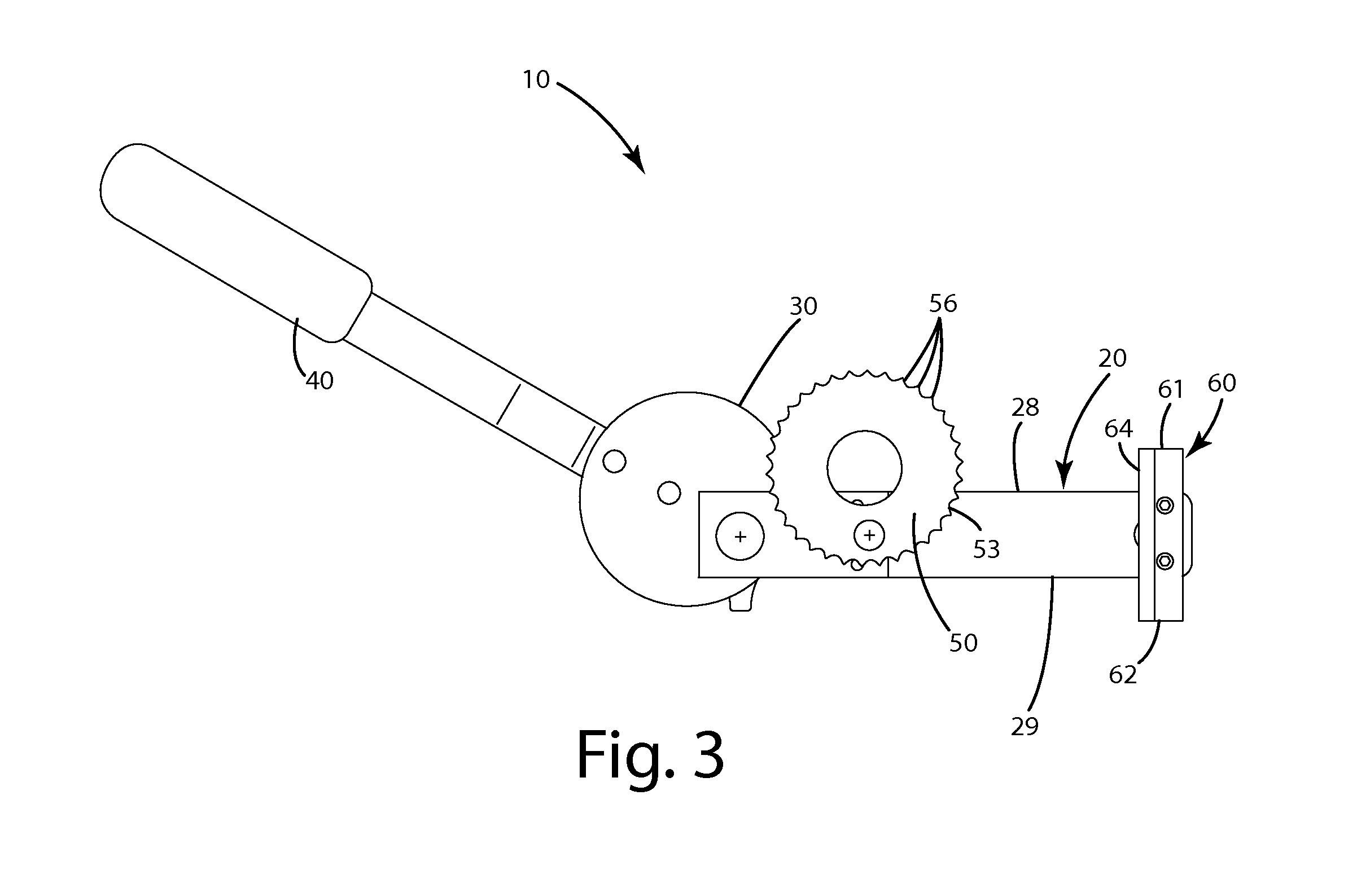Carpentry tool
a carpentry and tool technology, applied in the field of carpentry tools, can solve the problems of difficult installation of hidden fasteners in the edge or side of the board and the underlying joist, difficult to achieve, and many conventional tools of the type described above are complex and expensive, so as to achieve the effect of effectively pushing the board and enhancing access and use of the tool
- Summary
- Abstract
- Description
- Claims
- Application Information
AI Technical Summary
Benefits of technology
Problems solved by technology
Method used
Image
Examples
Embodiment Construction
[0036]A carpentry tool according to a current embodiment is illustrated in FIGS. 1-3 and generally designated 10. The carpentry tool can include a base 20 to which a pusher cam 30 is attached. A lever 40 can be attached to the pusher cam. A joist cam 50 can be joined with the base 20, opposite a secondary joist engaging element 60, across a joist recess. The pusher cam 30 includes an outer perimeter that can be angled and / or rounded, but configured to engage a board to be pushed as further described below. The joist cam 50, also referred to as a first or primary joist engaging element, can be spaced a dynamically adjustable distance D from the secondary joist engaging element 60. This distance D can correspond to the width of one or more joists or underlying substructures.
[0037]Although referred to as a “cam” herein, the pusher cam and joist cam herein can be of a variety of different shapes and sizes. Generally, the axis of rotation of these elements is offset from the geometric an...
PUM
 Login to View More
Login to View More Abstract
Description
Claims
Application Information
 Login to View More
Login to View More - R&D
- Intellectual Property
- Life Sciences
- Materials
- Tech Scout
- Unparalleled Data Quality
- Higher Quality Content
- 60% Fewer Hallucinations
Browse by: Latest US Patents, China's latest patents, Technical Efficacy Thesaurus, Application Domain, Technology Topic, Popular Technical Reports.
© 2025 PatSnap. All rights reserved.Legal|Privacy policy|Modern Slavery Act Transparency Statement|Sitemap|About US| Contact US: help@patsnap.com



